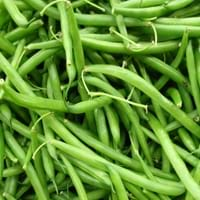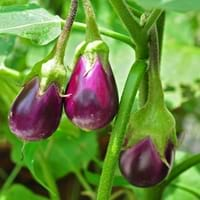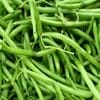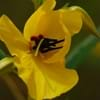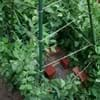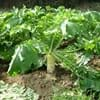Life Span
Annual
Perennial
Origin
Central America, South America
Africa, Asia
Types
Golden Wax Bean, Romano bean
Not Available
Number of Varieties
Not Available
Habitat
Fields, orchards
Cultivated Beds
USDA Hardiness Zone
Not Available
10-15
AHS Heat Zone
Not Available
12-1
Sunset Zone
A1, A2, A3, H1, H2, 1a, 1b, 2a, 2b, 3a, 3b, 4, 5, 6, 7, 8, 9, 10, 11, 12, 13, 14, 15, 16, 17, 18, 19, 20, 21, 22, 23, 24
A1, A2, A3, H1, H2, 1a, 1b, 2a, 2b, 3a, 3b, 4, 5, 6, 7, 8, 9, 10, 11, 12, 13, 14, 15, 16, 17, 18, 19, 20, 21, 22, 23, 24
Habit
Vining/Climbing
Clump-Forming
Flower Color
White, Pink, Lavender
Lavender
Flower Color Modifier
Bicolor
Bicolor
Fruit Color
White, Green, Dark Red, Tan, Black
White, Purple, Plum, Black
Leaf Color in Spring
Green, Purple, Dark Green
Green
Leaf Color in Summer
Green, Dark Green
Green
Leaf Color in Fall
Green, Dark Green
Green
Leaf Color in Winter
Not Available
Green
Leaf Shape
Maple shaped
Elliptic
Plant Season
Spring, Summer, Fall
Summer, Fall
Sunlight
Full Sun
Full Sun
Growth Rate
Fast
Very Fast
Type of Soil
Loam, Sand
Clay, Loam, Sand
The pH of Soil
Neutral, Alkaline
Neutral
Soil Drainage
Well drained
Well drained
Bloom Time
Indeterminate
Indeterminate
Tolerances
Drought
Drought
Where to Plant?
Container, Ground
Ground
How to Plant?
Seedlings
Seedlings
Plant Maintenance
Medium
Medium
Watering Requirements
Do not let dry out between waterings, Use Mulches to help prevent water loss during hot and windy weather
Do not water frequently, Needs less watering, Over-watering can cause leaf problems or root diseases, Water Deeply
In Summer
Lots of watering
Lots of watering
In Spring
Moderate
Moderate
In Winter
Average Water
Average Water
Soil pH
Neutral, Alkaline
Neutral
Soil Type
Loam, Sand
Clay, Loam, Sand
Soil Drainage Capacity
Well drained
Well drained
Sun Exposure
Full Sun
Full Sun
Pruning
Remove damaged leaves, Remove dead branches, Remove dead leaves
Remove damaged leaves, Remove dead branches, Remove dead leaves
Fertilizers
All-Purpose Liquid Fertilizer
All-Purpose Liquid Fertilizer, Apply N-P-K, Less fertilizing
Pests and Diseases
Free of serious pests and diseases
Aphids, Leaf spot, Red blotch
Plant Tolerance
Drought
Drought, Shade areas
Flower Petal Number
Single
Single
Fragrant Bark/Stem
No
Yes
Foliage Texture
Coarse
Medium
Foliage Sheen
Matte
Matte
Attracts
Aphids, Birds, Butterflies, Caterpillar
Not Available
Allergy
Diarrhea, Irritation to stomach
Throat itching
Aesthetic Uses
Not Used For Aesthetic Purpose
Not Used For Aesthetic Purpose
Beauty Benefits
Making cosmetics, Remove blemishes
Not Available
Environmental Uses
Food for animals, No fertilizer, pesticides, or herbicides needed
Air purification
Medicinal Uses
Acne, Diuretic, Emmoiliant, Menstrual Disorders
Antidote, Astringent
Part of Plant Used
Fruits
Fruits, Leaves
Other Uses
Animal Feed, Used as a nutritious food item
Not Available
Used As Indoor Plant
Yes
No
Used As Outdoor Plant
Yes
Yes
Garden Design
Edible, Herb, Vegetable, Vine
Container, Edible, Herb, Vegetable
Botanical Name
PHASEOLUS vulgaris
SOLANUM melongena 'Ichiban'
Common Name
Green Beans
brinjal
melongene
garden egg
guinea squash
In Hindi
फलियां
जापानी बैंगन
In German
Bohnen
japanische Aubergine
In French
haricots
aubergine japonaise
In Spanish
Green Beans
Berenjena japonesa
In Greek
φασόλια
Ιαπωνικά Μελιτζάνα
In Portuguese
feijões
Beringela japonesa
In Polish
fasola
japoński Bakłażan
In Latin
fabam
Eggplant Italica
Phylum
Spermatophyta
Tracheophyta
Class
Magnoliopsida
Magnoliopsida
Family
Fabaceae
Solanaceae
Clade
Dicotyledonous
Angiosperms, Asterids, Eudicots
Tribe
Not Available
Not Available
Subfamily
Not Available
Not Available
Number of Species
Not Available
Importance of Spring Beans and Japanese Eggplant
Want to have the most appropriate plant for your garden? You might want to know the importance of Spring Beans and Japanese Eggplant. Basically, these two plants vary in many aspects. Compare Spring Beans and Japanese Eggplant as they differ in many characteristics such as their life, care, benefits, facts, etc. Every gardener must at least have the slightest clue about the plants he wants to plant in his garden. Compare their benefits, which differ in many ways like facts and uses. The medicinal use of Spring Beans is Acne, Diuretic, Emmoiliant and Menstrual Disorders whereas of Japanese Eggplant is Antidote and Astringent. Spring Beans has beauty benefits as follows: Making cosmetics and Remove blemishes while Japanese Eggplant has beauty benefits as follows: Making cosmetics and Remove blemishes.
Compare Facts of Spring Beans vs Japanese Eggplant
How to choose the best garden plant for your garden depending upon its facts? Here garden plant comparison will help you to solve this query. Compare the facts of Spring Beans vs Japanese Eggplant and know which one to choose. As garden plants have benefits and other uses, allergy is also a major drawback of plants for some people. Allergic reactions of Spring Beans are Diarrhea and Irritation to stomach whereas of Japanese Eggplant have Throat itching respectively. Having a fruit bearing plant in your garden can be a plus point of your garden. Spring Beans has showy fruits and Japanese Eggplant has showy fruits. Also Spring Beans is not flowering and Japanese Eggplant is not flowering . You can compare Spring Beans and Japanese Eggplant facts and facts of other plants too.
